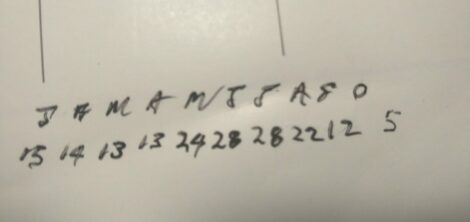Photo reference: Migraine diaries. Photo by Serguei Kisselev in December 2020. Taken and used with permission, privacy protected for doctor-patient confidentiality.
Migraine
As you know, this condition can be very debilitating and causes a lot of suffering. Very often the reason behind these severe headaches can’t be established, the official management provides only symptomatic relief and not always in full. Migraines are a real challenge for doctors when we are not able to provide our patients with reasonable solutions.
Today, I am going to tell you the story of one of my patients, who has been suffering from migraines for many years. Through the course of his illness, he was consulted by many different specialists, had complex investigations including different blood and imaging tests and tried a large number of medications – both preventative and relieving. Unfortunately, all these attempts to improve his condition were not very successful, he gave up and for the last several years relied on Codeine when he needed.
He presented me with his migraine diary, shown below:

He recorded the number of migraines every month. As you can see it could be as rare as 12-14 episodes per month as in February, March, April and September, or almost every day as in June and July. He regularly visited me to renew his scripts for Panadeine Forte and other antimigraine medications.
One day, I offered him a management solution with Millimetric Wave electrostimulation. Obviously, I explained him the nature of this treatment, possible adverse effects and the expected results. To say that he was sceptical is an understatement. To be frank – after all his previous experiences, he did not believe in any positive outcome and agreed to have this type of treatment only with respect to my intention to help him and my promise to cease the treatment immediately upon his request. Done deal.
We started the course of Millimetric Wave Stimulation and he had treatment twice a week. After two weeks he made a comment that the episodes of migraines had become less severe, less frequent and easier to manage. I understand that it was difficult for him to start to accept the relief and to not be heavily disappointed if the problem returns after some success.
After eight procedures, he stopped noticing migraine episodes until the end of the course and for the following three months. He could not believe that he had no migraines for such a long time.
To be completely honest, he still has occasional episodes of migraines which he is able to effectively manage. Two and a half months since the initial course of the Millimetric Wave stimulation therapy, he is able to maintain his wellbeing with a 3-6 monthly maintenance course.
